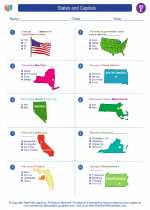Religious Boundaries
Religious boundaries refer to the divisions or demarcations that exist between different religious groups, often influencing the social, cultural, and political dynamics of a region. These boundaries can be physical, such as the presence of religious buildings or sites, or they can be abstract, such as the beliefs and practices that define a particular religion.
Key Concepts
- Religious Beliefs: The fundamental tenets, doctrines, and teachings of a particular religion.
- Religious Practices: The rituals, ceremonies, and customs associated with a specific religious tradition.
- Religious Sites: Places of worship, pilgrimage, or historical significance for a religious community.
- Religious Tolerance: The acceptance and respect for different religious beliefs and practices.
- Religious Conflict: Disputes, tensions, or violence arising from differences in religious beliefs and practices.
- Religious Pluralism: The coexistence of multiple religious groups within a society.
Study Guide
Use the following questions to guide your study of religious boundaries:
- What are the main components of religious boundaries?
- How do religious boundaries impact the interactions between different religious communities?
- What role do religious sites play in the establishment of religious boundaries?
- What are the potential consequences of religious conflict resulting from the presence of religious boundaries?
- What strategies can be employed to promote religious tolerance and peaceful coexistence across religious boundaries?
- How does the concept of religious pluralism relate to the existence of religious boundaries?
Understanding religious boundaries is essential for comprehending the complexities of global societies and the interplay of diverse belief systems. Explore the historical, cultural, and geopolitical dimensions of religious boundaries to gain a deeper insight into the dynamics of human civilization.
.◂Social Studies Worksheets and Study Guides Fifth Grade. States and Capitals
Study Guide States and Capitals
States and Capitals  Worksheet/Answer key
Worksheet/Answer key States and Capitals
States and Capitals  Worksheet/Answer key
Worksheet/Answer key States and Capitals
States and Capitals  Worksheet/Answer key
Worksheet/Answer key States and Capitals
States and Capitals 

 Worksheet/Answer key
Worksheet/Answer key
 Worksheet/Answer key
Worksheet/Answer key
 Worksheet/Answer key
Worksheet/Answer key

The resources above cover the following skills:
Geography: A student should be able to utilize, analyze, and explain information about the human and physical features of places and regions. A student who meets the content standard should:
Understand that a region is a distinct area defined by one or more cultural or physical features.